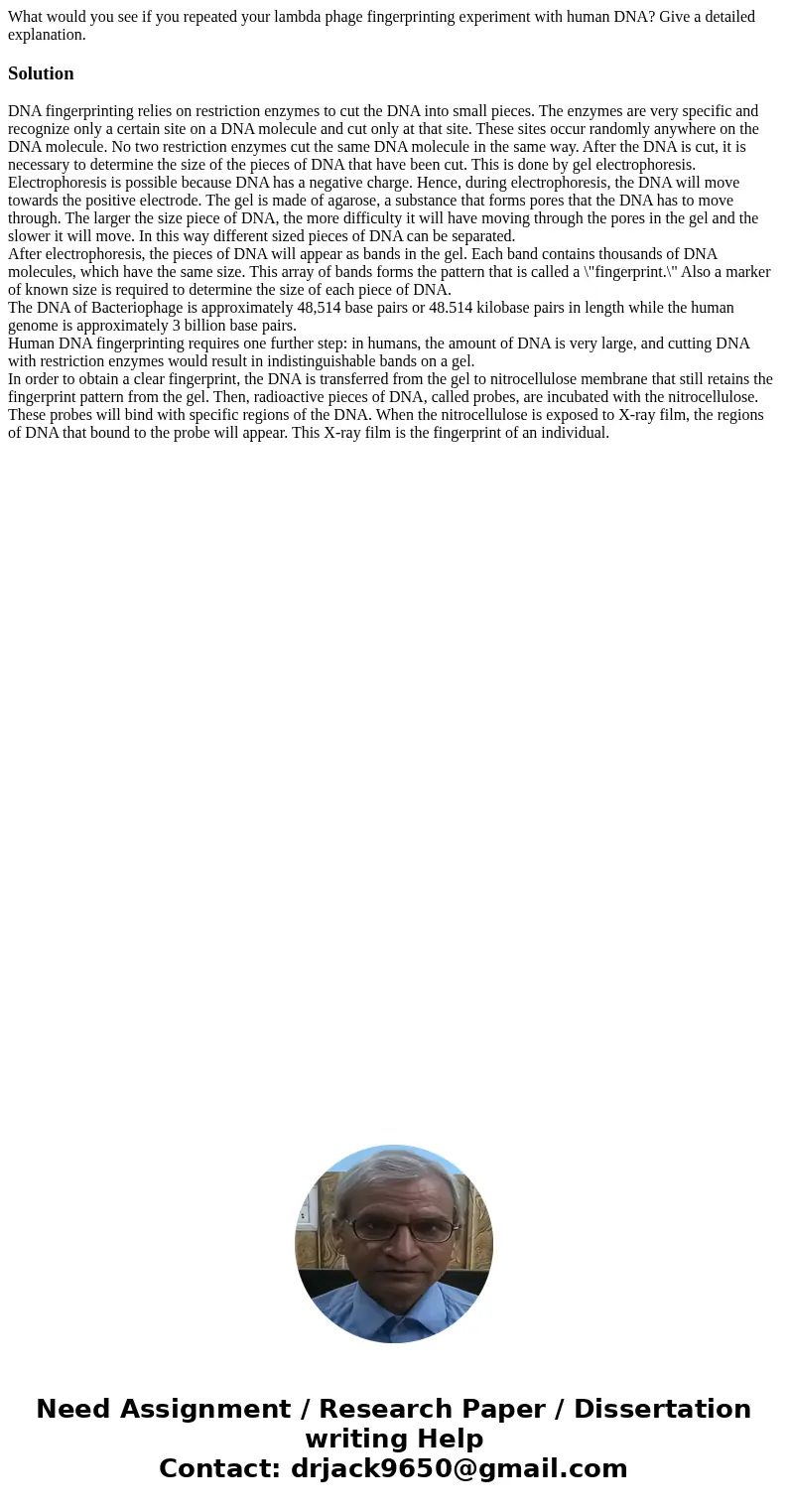What would you see if you repeated your lambda phage fingerp
What would you see if you repeated your lambda phage fingerprinting experiment with human DNA? Give a detailed explanation.
Solution
DNA fingerprinting relies on restriction enzymes to cut the DNA into small pieces. The enzymes are very specific and recognize only a certain site on a DNA molecule and cut only at that site. These sites occur randomly anywhere on the DNA molecule. No two restriction enzymes cut the same DNA molecule in the same way. After the DNA is cut, it is necessary to determine the size of the pieces of DNA that have been cut. This is done by gel electrophoresis.
Electrophoresis is possible because DNA has a negative charge. Hence, during electrophoresis, the DNA will move towards the positive electrode. The gel is made of agarose, a substance that forms pores that the DNA has to move through. The larger the size piece of DNA, the more difficulty it will have moving through the pores in the gel and the slower it will move. In this way different sized pieces of DNA can be separated.
After electrophoresis, the pieces of DNA will appear as bands in the gel. Each band contains thousands of DNA molecules, which have the same size. This array of bands forms the pattern that is called a \"fingerprint.\" Also a marker of known size is required to determine the size of each piece of DNA.
The DNA of Bacteriophage is approximately 48,514 base pairs or 48.514 kilobase pairs in length while the human genome is approximately 3 billion base pairs.
Human DNA fingerprinting requires one further step: in humans, the amount of DNA is very large, and cutting DNA with restriction enzymes would result in indistinguishable bands on a gel.
In order to obtain a clear fingerprint, the DNA is transferred from the gel to nitrocellulose membrane that still retains the fingerprint pattern from the gel. Then, radioactive pieces of DNA, called probes, are incubated with the nitrocellulose. These probes will bind with specific regions of the DNA. When the nitrocellulose is exposed to X-ray film, the regions of DNA that bound to the probe will appear. This X-ray film is the fingerprint of an individual.

 Homework Sourse
Homework Sourse